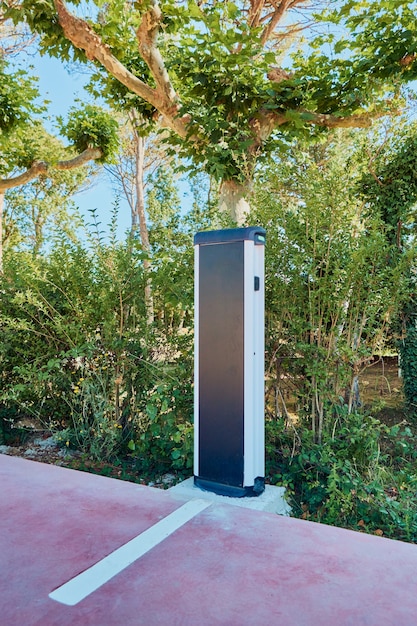US Government Green Tech Incentives: A 2025 Guide for Businesses & Individuals

US Government Incentives for Green Technology Adoption in 2025 offer numerous opportunities for businesses and individuals through tax credits, grants, and rebates, encouraging investments in renewable energy, energy efficiency, and sustainable practices to combat climate change and promote a greener economy.
Navigating the landscape of green technology adoption can be significantly eased with the help of government incentives. The US Government Incentives for Green Technology Adoption: What Businesses and Individuals Need to Know in 2025, are designed to encourage sustainable practices and investments in a greener future.
Understanding Federal Tax Credits for Green Technologies
Federal tax credits are a cornerstone of US government incentives for green technology. These credits directly reduce the amount of taxes owed by businesses and individuals, making green investments more financially appealing.
Renewable Energy Tax Credits
One of the most significant federal incentives is the renewable energy tax credit. It encourages the adoption of solar, wind, and geothermal energy systems.
Energy Efficiency Tax Credits
Energy efficiency tax credits target improvements that reduce energy consumption in buildings and homes, promoting upgrades to more efficient systems.
- Investment Tax Credit (ITC): Supports businesses investing in solar, wind, and other renewable energy properties.
- Residential Clean Energy Credit: Encourages individuals to install solar, wind, and geothermal energy systems in their homes.
- Energy Efficient Commercial Buildings Deduction (179D): Offers deductions for energy-efficient improvements to commercial buildings.
- New Energy Efficient Home Credit (45L): Provides credits to home builders who construct energy-efficient homes.

These tax credits collectively aim to reduce the financial burden on those looking to adopt green technologies, fostering a broader transition to sustainable practices.
Exploring Grant Programs for Green Initiatives
In addition to tax credits, the US government offers various grant programs designed to support green initiatives. These programs provide direct funding to projects that promote renewable energy, energy efficiency, and other sustainable practices.
Department of Energy (DOE) Grants
The DOE offers numerous grants that support green technology research, development, and deployment. These grants are often competitive and target innovative projects with the potential for significant impact.
Environmental Protection Agency (EPA) Grants
The EPA provides grants for projects focused on environmental protection and sustainability. These grants often support initiatives related to clean air, water, and waste management.
- State Energy Program (SEP): Provides funding to states to support energy efficiency and renewable energy projects.
- Weatherization Assistance Program (WAP): Helps low-income families reduce their energy costs by improving the energy efficiency of their homes.
- Diesel Emission Reduction Program (DERA): Supports projects that reduce diesel emissions from vehicles and equipment.
Grant programs are an essential tool for driving innovation and supporting projects that might not otherwise receive funding, helping to accelerate the adoption of green technologies across various sectors.
State-Level Incentives for Green Technology Adoption
While federal incentives play a crucial role, state-level incentives often provide additional support for green technology adoption. These incentives can vary significantly from state to state, reflecting different priorities and regional needs.
Renewable Portfolio Standards (RPS)
Many states have implemented Renewable Portfolio Standards (RPS), which require utilities to source a certain percentage of their electricity from renewable sources. This can create demand for renewable energy projects and drive investment in green technologies.
State Tax Credits and Rebates
In addition to federal tax credits, many states offer their own tax credits and rebates for renewable energy and energy efficiency projects. These incentives can further reduce the cost of adopting green technologies.

- California Solar Initiative (CSI): Offers rebates for solar energy systems installed on homes and businesses.
- Massachusetts Clean Energy Center (MassCEC): Provides grants and rebates for renewable energy and energy efficiency projects.
- New York State Energy Research and Development Authority (NYSERDA): Offers various programs to support clean energy and energy efficiency.
State-level incentives are vital for tailoring support to local needs and driving green technology adoption at the grassroots level, complementing federal efforts to create a more sustainable future.
Navigating Rebate Programs for Green Appliances and Equipment
Rebate programs offer another avenue for individuals and businesses to reduce the upfront cost of adopting green technologies. These programs provide cash back or discounts on the purchase of energy-efficient appliances, equipment, and vehicles.
Energy Star Rebates
The Energy Star program, a joint initiative of the EPA and DOE, offers rebates on a wide range of energy-efficient appliances and equipment. These rebates can make it more affordable to upgrade to greener options.
Vehicle Rebates and Incentives
Many states and local governments offer rebates and incentives for the purchase of electric vehicles (EVs) and other alternative fuel vehicles. These incentives can help offset the higher initial cost of these vehicles.
- Federal EV Tax Credit: Offers up to $7,500 in tax credits for the purchase of new electric vehicles.
- State EV Rebates: Many states offer additional rebates for EV purchases, further reducing the cost.
- Utility Rebates: Some utilities offer rebates for energy-efficient appliances, lighting, and HVAC systems.
Rebate programs are an effective way to encourage consumers and businesses to choose greener options, making sustainable choices more accessible and affordable.
The Impact of Green Technology Adoption on Businesses
Adopting green technologies can have a significant impact on businesses, leading to cost savings, increased efficiency, and enhanced reputation. Government incentives play a crucial role in incentivizing businesses to invest in sustainable practices.
Cost Savings and Efficiency
Green technologies can help businesses reduce their energy consumption, lower their operating costs, and improve their bottom line. Incentives like tax credits and rebates can make these investments more financially attractive.
Enhanced Reputation and Market Position
Businesses that adopt green technologies often benefit from an enhanced reputation and improved market position. Consumers are increasingly looking for sustainable products and services, and companies that prioritize sustainability can gain a competitive advantage.
- Reduced Energy Costs: Energy-efficient equipment and practices can significantly lower utility bills.
- Increased Productivity: Green buildings and workplaces can improve employee health and productivity.
- Attracting Investors: Investors are increasingly interested in companies with strong environmental, social, and governance (ESG) performance.
By embracing green technologies, businesses can not only contribute to a more sustainable future but also improve their financial performance and enhance their brand image, creating a win-win scenario.
How Individuals Can Benefit from Green Tech Incentives
Individuals can also benefit significantly from US government incentives for green technology adoption. These incentives can help homeowners, renters, and consumers make sustainable choices and reduce their environmental footprint.
Home Energy Efficiency Upgrades
Incentives like tax credits and rebates can help individuals afford energy-efficient upgrades to their homes, such as insulation, windows, and HVAC systems. These upgrades can lower energy bills and improve comfort.
Renewable Energy Investments
Individuals can also take advantage of incentives for installing solar panels, wind turbines, and geothermal systems on their properties. These investments can provide clean energy and reduce reliance on fossil fuels.
- Lower Energy Bills: Energy-efficient appliances and renewable energy systems can significantly reduce monthly utility costs.
- Increased Home Value: Energy-efficient homes are often more attractive to buyers and can command a higher price.
- Environmental Benefits: Adopting green technologies can help reduce carbon emissions and protect the environment.
By leveraging green tech incentives, individuals can improve their homes, save money, and contribute to a more sustainable future, making a positive impact on both their wallets and the environment.
| Key Point | Brief Description |
|---|---|
| 💰 Tax Credits | Reduce taxes for investments in renewable energy and energy efficiency. |
| grants | Direct funding for green projects from DOE and EPA. |
| deals Rebates | Cash backs or discounts on energy-efficient appliances and EVs. |
| 🌱 Business Impact | Cost savings, better reputation, and stronger market position for green businesses. |
Frequently Asked Questions
▼
The main federal tax credits include the Investment Tax Credit (ITC) for businesses and the Residential Clean Energy Credit for homeowners, both supporting renewable energy adoption.
▼
Businesses can see reduced energy costs, increased productivity, a better public image, and attract ESG-focused investors by adopting green technologies.
▼
The DOE funds projects for green tech R&D, while the EPA supports initiatives focused on clean air, water, and waste management.
▼
RPS are state mandates requiring utilities to source a percentage of their electricity from renewable sources, driving demand for green energy projects.
▼
Rebates provide cash back or discounts on energy-efficient appliances and electric vehicles, making green technologies more affordable and accessible.
Conclusion
Understanding and leveraging the US Government Incentives for Green Technology Adoption: What Businesses and Individuals Need to Know in 2025, is crucial for creating a more sustainable and prosperous future. By taking advantage of tax credits, grants, and rebates, both businesses and individuals can contribute to a greener economy while reaping significant financial and environmental benefits. Embracing these opportunities will pave the way for a healthier planet and a more resilient society.





